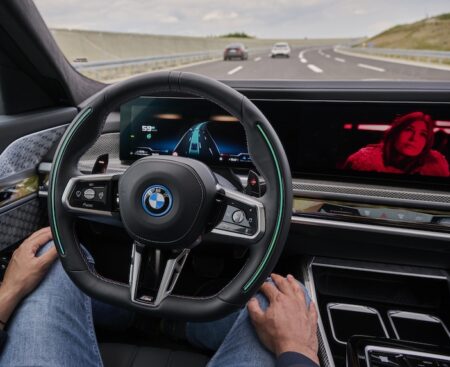The electronic stability control (ESC) system market is set to grow from its current market value of more than $27 billion, to over $45 billion by 2025. Vehicle stability and traction control systems have become important for improving vehicle safety. The growing need to prevent vehicle skidding due to events such as sudden braking, slippery road surfaces, and loss of vehicle control by drivers has boosted developments in the ESC system market.
These systems use a number of sensors, such as wheel-speed sensors, lateral acceleration sensors and steering angle sensors, to determine the required braking forces for individual wheels. Traction control systems and ABS are generally integrated with ESC systems, and these systems can effectively prevent understeer and oversteer in vehicles.
The commercial vehicle segment is witnessing rapid growth in the ESC system market. The growing awareness about vehicle safety is creating a higher demand for these systems in commercial vehicles. In October 2017, Tata Motors introduced ESC in medium-duty and commercial vehicles in India. Companies in the ESC market, such as Bendix Commercial Vehicle Systems and WABCO, are introducing newer products for commercial vehicles. In November 2018, WABCO entered into an agreement with the commercial vehicle manufacturer, Hyundai Motor Company, for the development of advanced technologies and products, such as ESC systems, ABS, electronic braking systems and others, for a series production of Hyundai’s new medium-duty trucks.
Government regulations for the implementation of these systems in automobiles are creating a higher demand in the ESC system market. Countries and regions including Japan, Australia, Canada, South Korea and the European Union have provided mandatory regulations for the implementation of ESC systems. In addition, developing countries are focusing on introducing such regulations for improving vehicle safety. In September 2018, the Ministry of Road Transport and Highway of India announced the government’s plan to make automatic emergency braking (AEB) and ESC systems mandatory in cars by 2022-23.
Europe will have high growth potential for the ESC system market owing to the region’s higher demand for vehicle safety features. The presence of a number of players including Robert Bosch, ZF Friedrichshafen, and others are influencing the growth of the market. The presence of an EU mandate for the implementation of ESC systems in passenger cars as well as commercial vehicles will further ensure the growth of the automotive safety industry.
Robert Bosch GmbH, ZF Friedrichshafen, Continental AG, Autoliv, Hitachi Automotive Systems, Johnson Electric, Bendix Commercial Vehicle Systems, and WABCO are leading companies in the ESC system market. The growing demand for ESC systems in commercial vehicles is creating higher growth opportunities for such companies. In March 2019, ZF Friedrichshafen AG signed a definitive agreement for the acquisition of WABCO. With this acquisition the company is aiming to position itself as a leading provider of mobility systems for commercial vehicles . The companies are focusing on offering an electronic stability system integrated with ABS and traction control.
However, the implementation of these systems increases vehicle cost, which can hamper the industry. The requirement to have a number of sensors and control units increases system complexity, adding to costs and limiting the implementation of these systems in entry-level cars. Higher raw material costs and the closing down of production plants by companies, such as General Motors, in the North American region can have a considerable impact on the market growth. However, technological advancements and product developments are expected to bring down manufacturing costs.





